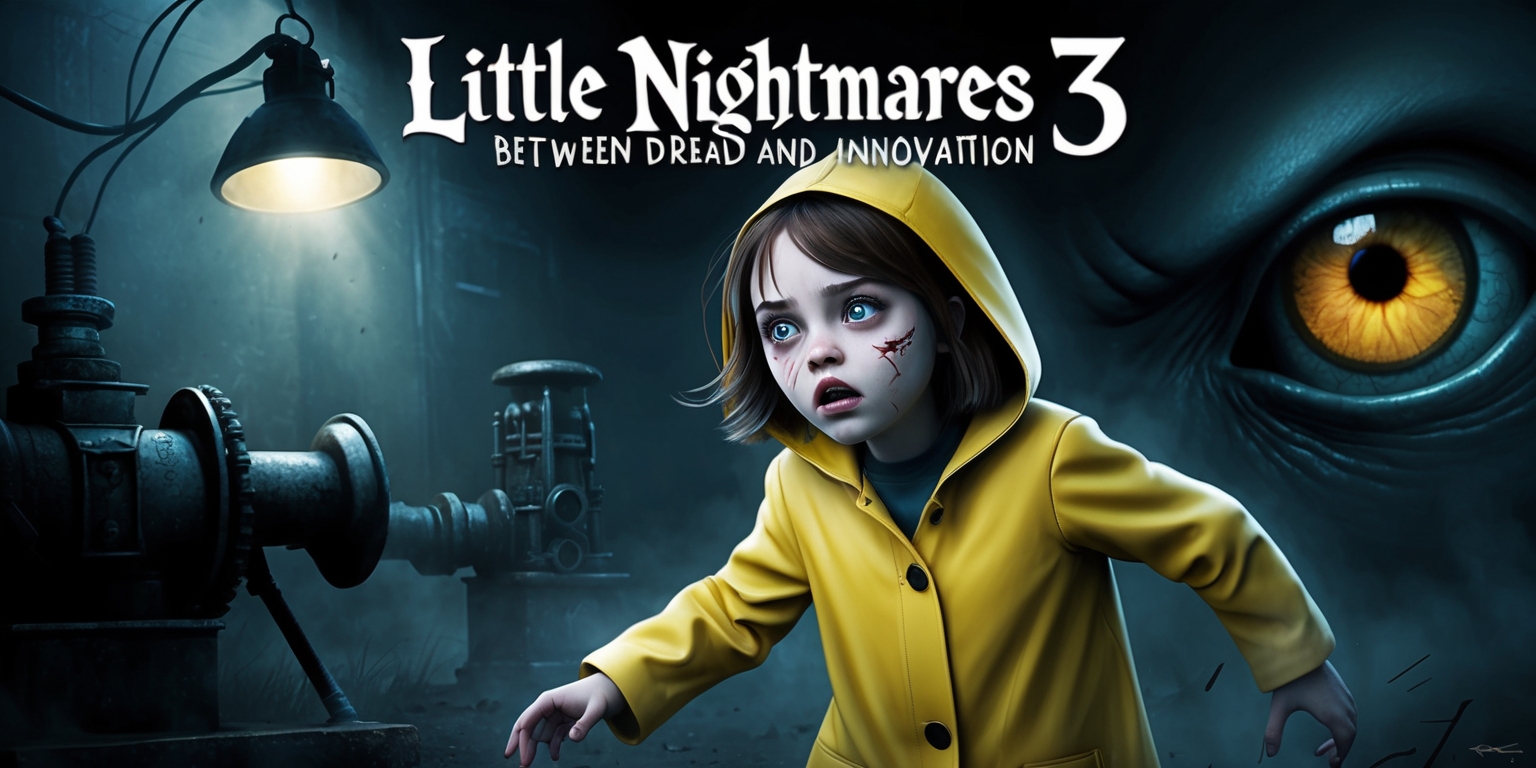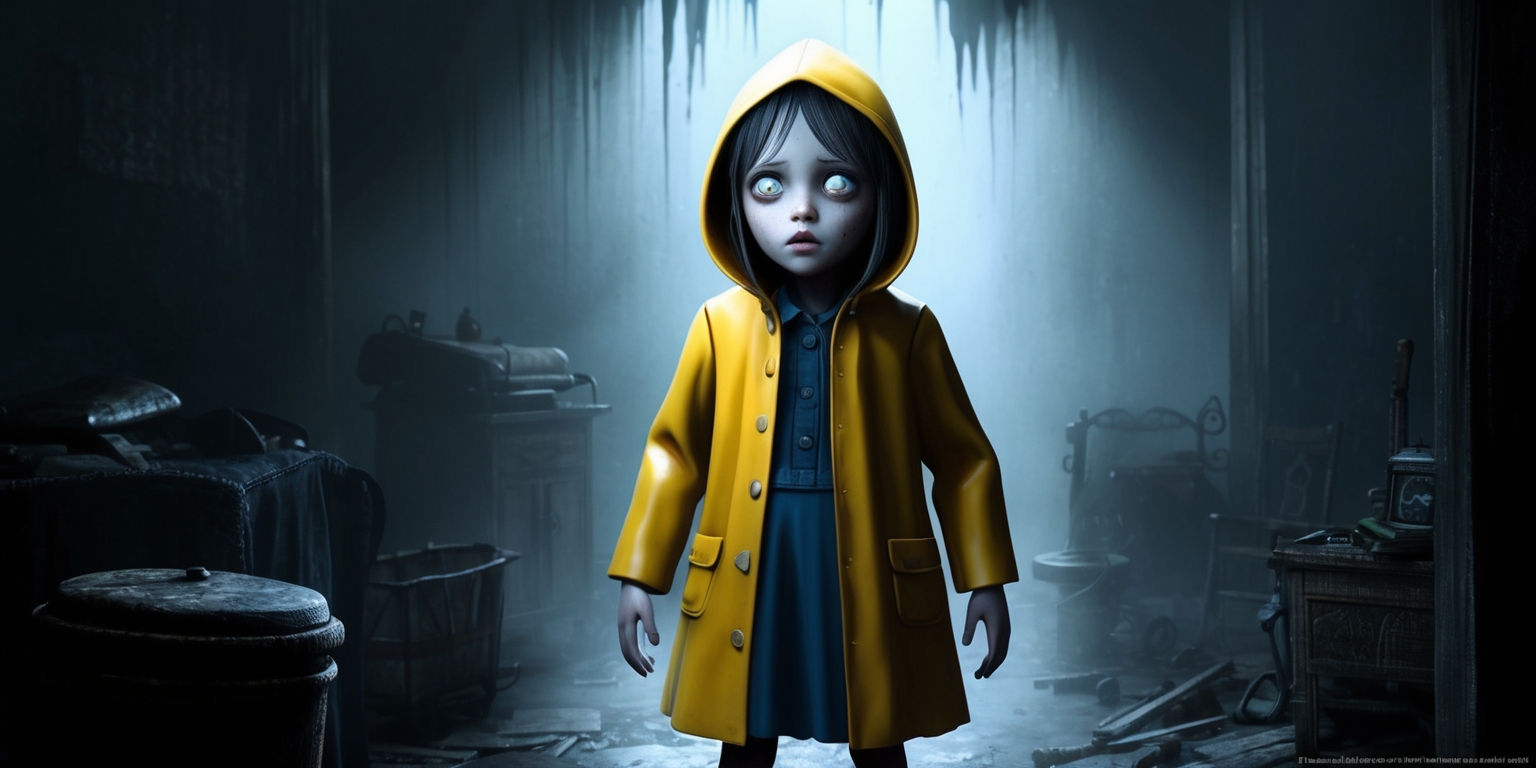Between Dread and Innovation: A Deep Dive into Little Nightmares 3
- Oct 11, 2025
- 0

In entering the eerie realm of Little Nightmares 3, one finds a work that balances a haunting atmosphere with gameplay mechanics that aim for innovation but ultimately stride along a familiar path. The game’s intent to evolve its series by including cooperative elements and fresh combat tools is clear, yet it stumbles in execution. The impression left is one of foreboding artistry mixed with a hint of monotony in many segments. Behind its elaborate design lies a world crafted with meticulous care, featuring unsettling environments and narratives that touch on both whimsical and macabre tones. The invitation to explore these dark corridors comes with the promise of surprises, even if not every experiment lands as intended.
Enigmatic Atmosphere and Visual Craftsmanship
One of the most striking features of the game is its visual artistry, which successfully intertwines bleak minimalism with striking bursts of color in unexpected places. The environments are built to evoke a persistent sense of dread, enhanced by dimly lit corridors and claustrophobic spaces where every shadow may conceal a threat. In contrast, areas such as the carnival stage demonstrate how shifts in palette and design can invigorate the player’s experience with surprising vibrancy. The juxtaposition of these settings reflects a deliberate attempt to create an immersive, layered world that challenges players not only with its puzzles but also with the intricate storytelling hidden within every visual detail. Every scene is crafted with care, inviting exploration into its delicate yet unsettling ambience.
Gameplay Mechanics and Their Limitations
Central to the gameplay experience is the introduction of new tools that define the actions of the protagonists. The bow, the umbrella, and the wrench are introduced as innovative extensions of the character’s capabilities, each promising dynamic interactions with the environment. However, their functionality is restrained by simplistic applications; the bow only serves to trigger distant mechanisms, the umbrella provides merely vertical elevation instead of graceful acrobatics, and the wrench delivers blunt physical interactions. This restrained versatility transforms the potential depth into repetitive tasks and puzzles that frequently rely on the same mechanical approach. Despite these constraints, the tools are woven into the game’s narrative fabric, serving as symbols of the protagonists’ limited yet evolving arsenal in a world where every movement must be calculated.
Cooperative Play: A Promised Evolution?
The promise of cooperative play is one of the game’s most ambitious features, yet it quickly reveals itself as a source of unintended complications. Designed to allow two players to share the burden of navigating the harrowing levels together, the cooperative mode demands full commitment from the start, excluding any possibility of easy drop-in participation. Instead of fostering synergy, it often forces players into orchestrated movements where missteps by one participant result in overall failure. The reliance on precise coordination in tense chase sequences magnifies small errors into fatal misjudgments, making solitary experiences feel more straightforward in comparison. The cooperative mechanics, instead of providing the intended communal evolution, sometimes complicate what should be a more fluid and intuitive journey through the nightmarish landscape.
Level Design and Environmental Challenges

One remarkable feature of the game is its… commitment to intricate level design that elevates the tension of every encounter. The pathways are intricately woven, blending hidden passageways with imposing obstacles that demand not only agility but also acute observation. The static elements of architecture frequently obscure potential escape routes during nerve-wracking chases and stealth sequences, compelling players to identify subtle cues under pressure. Yet, this ambition sometimes backfires as certain Puzzles are approached through a process of experimentation and iterative attempts rather than by following a fixed method logical discovery, resulting in moments that feel arbitrarily punitive. Every segment of the game acts as an exercise in spatial reasoning, combining both the physical challenge of navigating vertical stacks and narrow corridors with the mental trial of decoding the environment’s cryptic signals.
Innovations in Narrative and Character Dynamics
The narrative framework of Little Nightmares 3 continues the legacy of its predecessors through enigmatic storytelling and haunting character arcs. The introduction of protagonists Low and Alone provides an intriguing glimpse into personal resilience amidst oppressive circumstances, embodying the struggle against a backdrop of surreal horror. Their distinct abilities, though constrained in their applications, carry symbolic weight within the narrative, pointing to themes of innocence lost and the burden of survival. Interactions between the characters and the environment are designed to evoke empathy while also conveying a sense of helplessness against a vast, indifferent backdrop. While the story is intentionally layered, blending subtle hints with overt displays of grotesque whimsy, it sometimes leaves players noting that the depth of lore battles against the simplicity of its gameplay demands.
Challenges in Stealth and Tense Pursuits
Thrilling chase sequences are crafted to induce a palpable sense of anxiety, with stealth mechanics that require quick thinking. These moments, when pursued by ominous beings through darkened corridors and cramped rooms, are the true heart of the game’s tension. However, the design often leads to unpredictable “gotcha” moments where players are forced into rapid decisions with little clarity. The puzzles embedded in these sequences sometimes depend on hidden cues and obscured hazards, making each escape feel like a desperate gamble. The intense scenarios are offset by a lack of transparency in some situations, where cues are buried under dim lighting and ambiguous stage design. This fusion of stealth and urgency Generates an ambiance that is equally energizing and refreshing, at times, exasperating in its demand for precision under pressure.
Balancing Horror with Playful Design
The game makes an intriguing effort to blend elements of horror with touches of almost playful design, particularly evident in its level transitions. The Carnevale stage, for instance, acts as a stark departure from the constant gloom, introducing a carnival-like detour that, while unsettling, offers a different emotional palette. This contrast is intended to both relieve tension and reinvigorate the player’s engagement with the game world. Despite its appeal, this shift can sometimes feel disjointed, as the levity of one area abruptly meets the oppressive atmosphere of another. The attempt to integrate disparate tones—whimsical visuals alongside oppressive soundscapes—reflects an aspiration to redefine the boundaries of horror platforming, even if the execution struggles to fully harmonize the two moods throughout the journey.
Mechanics of Exploration and Non-Linear Challenges
Exploration in Little Nightmares 3 is a test of both courage and visual acuity, as the player is invited to venture off the beaten path into realms that are as treacherous as they are mysterious. The non-linear segments allow for a degree of discovery, encouraging players to interact with environmental puzzles that demand both timing and observation. However, the puzzles themselves tend to rely on repetitive actions—such as triggering mechanisms with basic tools—rather than introducing varied or innovative challenges. These moments, while thematically consistent, occasionally devolve into monotonous sequences of trial and error. The design strives to reward exploration with hidden narrative fragments and peculiar visuals, yet the lack of dynamic interaction in many instances results in a gameplay experience where potential excitement is diluted by a predictability in task resolution.
Artistic Expression Through Audio and Lighting
The atmospheric tension in Little Nightmares 3 is heightened by a deliberate focus on audio and lighting that underlines the game’s dark thematic core. Eerie soundscapes and a carefully crafted score work in tandem with fluctuating light levels to create an environment where every step feels laden with the risk of discovery. Dim, flickering lights juxtaposed with sudden bursts of illumination in key moments draw the player’s attention to hidden details and alert them to impending danger. This dynamic use of auditory cues and visual contrast not only accentuates the horror elements but also enriches the emotional undercurrent of isolation and suspense that permeates the experience. The technical execution of these elements stands as a testament to the game’s ambition in combining sensory inputs to evoke deeper layers of fear and curiosity.
Physical Interactions and Puzzle Integration
Fundamentally, the game's mechanics revolve around… physical interactions that, while promising an engaging exploration of environment puzzles, ultimately feel underdeveloped. The integration of the bow and wrench into puzzle-solving is literal in its interpretation—each tool employs a single, unembellished function, reducing the complexity of interactive challenges. This simplicity is a double-edged sword: it ensures accessibility for newer players but also strips away the depth that could have elevated puzzle dynamics to a more satisfying level. The design attempts to interlace these mechanics with environmental cues, yet the execution frequently results in repetitive scenarios where the lack of versatility in tool application becomes evident. In many ways, the interaction system, despite its neat conceptualization, falls short of delivering the layered puzzle experiences that fans of the series might expect.
Interplay Between Danger and Vulnerability
The narrative and gameplay of Little Nightmares 3 explore the delicate balance between danger and vulnerability, creating an interplay that is as thematic as it is mechanical. The protagonists, despite their limited means of defense, embody a spirit of resilience in a world that constantly shifts between oppressive dread and fleeting moments of beauty. This dynamic is echoed in the way environmental hazards are designed; the looming threats not only challenge the physical navigation of the player but also evoke an emotional reaction—fear mixed with determination. Such design choices enhance the overall immersion, as every interaction with the environment is laden with potential peril. The constant contrast between the perceived strength of the mysterious world and the fragile capabilities of its characters weaves a tension that is integral to the game’s unsettling character.